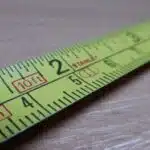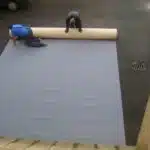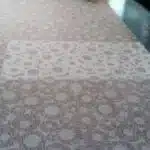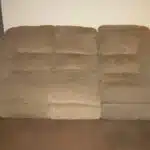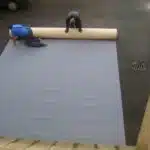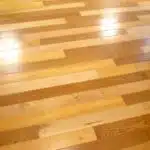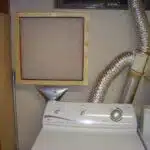As a professional in the carpet industry, accurate measurements are crucial to ensure customer satisfaction. Measuring for carpet may seem like a simple task, but it requires attention to detail and precision. Inaccurate measurements can result in costly mistakes and delays in installation, which ultimately affects the customer’s experience.
Before beginning the measurement process, it is important to understand the different types of carpet installation methods and their requirements. Carpet can be installed using either the direct glue-down or stretch-in method, both of which have specific measurement guidelines. Additionally, factors such as room shape and size, furniture placement, and doorways must also be taken into consideration when measuring for carpet. This article will provide step-by-step instructions on how to accurately measure for carpet and ensure a successful installation process for both yourself and your clients.
Understanding The Importance Of Accurate Measurements
Importance of Accurate Measurements in Carpet Installation
When it comes to carpet installation, accurate measurements are crucial. The success of the entire process depends on the precision and accuracy of these measurements. A slight miscalculation can lead to wasted time, effort, and money. Therefore, it is essential to understand the importance of accurate measurements before proceeding with any carpet installation project.
Accurate measurements help carpet installers determine the amount of material required for a specific area. Without precise measurements, excess material would be ordered, leading to wastage and increased installation costs. On the other hand, inadequate material could result in incomplete work or incorrect fitting that fails to meet the client’s expectations. Proper measurement techniques and best practices are necessary to ensure that the right amount of material is used during installation.
Moreover, accurate measurements also help in determining the proper placement of seams and patterns for a seamless finish. Incorrectly placed seams may cause gaps or overlapping areas that are unattractive and can quickly wear out over time due to heavy traffic. Overall, proper measurement techniques guarantee quality results that meet clients’ needs while minimizing wastage and additional costs.
Moving forward, understanding carpet installation methods is equally important as knowing how to measure accurately for carpets. In this regard, we will delve into different types of carpet installation methods in detail in the next section.
Types Of Carpet Installation Methods
Carpet installation requires precise measurement to ensure a seamless installation. The first step in measuring for carpet is determining the square footage of the room. To do this, measure the length and width of the room and multiply these numbers together. It is important to add an additional 10% to account for waste and pattern matching.
Pattern matching is particularly important when installing carpets with repeating patterns or designs. This process ensures that each section of carpet lines up perfectly with the adjacent section, creating a seamless appearance. When measuring for pattern matching, it is important to consider both the length and width of the room as well as any doorways or other obstacles that may affect the placement of seams.
To achieve a perfect fit, many carpet installation specialists use a four-item checklist:
- Measure each room twice to ensure accuracy
- Consider any unusual features such as staircases or angled walls
- Account for installation method when calculating square footage
- Factor in additional material for pattern matching and waste
By following these steps, carpet measurement specialists can ensure that their installations are flawless and meet their clients’ expectations. In the next section, we will explore direct glue-down installation methods and their unique advantages in certain situations.
Direct Glue-Down Installation
As a carpet measurement specialist, accurately measuring for carpet is crucial to a successful installation. Before any installation method can take place, proper measurements must be taken. The process of measuring for carpet involves several steps that require the use of specialized tools and techniques.
When it comes to direct glue-down installation, surface preparation and adhesive selection are key factors in ensuring the durability and longevity of the carpet. Surface preparation includes removing any existing flooring, cleaning and leveling the subfloor, and allowing it to dry completely before proceeding with installation. This is essential in creating a smooth surface for the adhesive to adhere to. In terms of adhesive selection, various types exist depending on the type of subfloor being used and the specific needs of the project.
Additionally, precise measurements must be taken during surface preparation as they play a role in determining how much adhesive will be required for the job. A professional installer will ensure that all areas have been measured properly before beginning work on any given space. Accurate measurements will also help determine if there are any irregularities in the subfloor which can affect how much adhesive is needed or if additional prep work is necessary before moving forward with installation.
Moving forward from direct glue-down installation, another popular method is stretch-in installation. This type of installation involves securing the carpet around its perimeter using tack strips while stretching it tightly across the room’s surface area. Proper measurements are still crucial in this method as they will determine how much excess material needs to be cut off before securing it with tack strips along walls or other fixed objects within the space.
Stretch-In Installation
Accurate measurements are vital for a successful Stretch-In Installation. It is necessary to measure the length and width of the room, as well as any openings, to determine the size and shape of the carpet needed. After the measurements have been taken, the carpet layout must be marked using a chalk line to indicate the boundaries of the carpet. The carpet should then be cut to the desired size, taking care to ensure that the cut edge is as straight as possible. Finally, it is important to secure the edges of the carpet by tucking them beneath the tack strip and using a power stretcher to stretch the carpet into place.
Measuring Room
As a professional carpet measurement specialist, it is crucial to measure the room correctly before installing the carpet. One of the essential tools you need is a measuring tape that should be at least 25 feet long and an eighth of an inch wide. Measuring tape tips include keeping it straight along the floor, measuring from wall-to-wall, and taking measurements in both directions to ensure accuracy.
One of the most common mistakes when measuring for carpet installation is failing to account for irregularities in the room’s shape. It is important to make sure all wall angles are measured, including any nooks or alcoves that may require additional attention. Additionally, failing to measure doorways and transitions can lead to an incorrect estimation of how much material will be necessary for installation.
Another critical aspect that many people overlook is measuring for patterned carpets accurately. This type of carpeting requires careful considerations as matching patterns can be challenging if not done correctly. Thus, it’s crucial to measure each section carefully and add a little extra square footage when calculating how much material you need for patterned carpets. Overall, taking precise measurements ensures that there are no surprises during installation day and that the client receives high-quality workmanship they can enjoy for years to come.
Marking Carpet Layout
As a professional carpet measurement specialist, it’s crucial to ensure that the carpet is stretched in correctly during installation. One of the essential steps in this process is marking the carpet layout accurately. This involves using measuring tape tips to measure each section carefully and taking into account any irregularities in the room’s shape.
When marking carpet layout, it’s important to use chalk or another temporary marker to outline the edges of the room. This ensures that the installer knows precisely where to place each section of carpet and helps prevent errors during installation. Additionally, marking transition areas between different types of flooring can help ensure that these areas are seamless and visually appealing.
Overall, marking carpet layout is a critical step in ensuring that a stretch-in installation goes smoothly. By measuring each section accurately and using temporary markers to outline the edges of the room, installers can ensure that they are providing high-quality workmanship that their clients will appreciate for years to come. Remembering these key tips can make all the difference when it comes to creating beautiful and functional spaces using carpets.
Securing Carpet Edges
After marking the carpet layout, securing the edges is another crucial step in a stretch-in installation. Finishing techniques play a vital role in ensuring that the carpet stays in place and looks neat. The most common methods of securing carpet edges include using tack strips or adhesives.
Tack strips are thin pieces of wood with sharp tacks sticking up from them. They are installed around the perimeter of the room and hold the carpet in place by gripping its backing. Adhesives, on the other hand, can be used to glue down the carpet’s edges directly to the floor or to an underlayment. Carpet padding options can also affect the choice of adhesive used.
Securing carpet edges is critical for preventing loose, wrinkled, or bunched-up areas that not only look unsightly but also pose a tripping hazard. A well-installed carpet should have smooth and secure edges that blend seamlessly into walls and transition areas between different types of flooring.
In summary, finishing techniques such as tack strips or adhesives play a significant role in securing carpet edges during a stretch-in installation. As professional carpet measurement specialists, it’s essential to understand these methods and recommend suitable options based on factors such as padding type and client preferences. By paying attention to these details, we can ensure that our clients receive high-quality workmanship that meets their needs and exceeds their expectations.
Room Shape And Size Considerations
When it comes to measuring for carpet installation, it’s important to consider the shape and size of the room. Odd shaped rooms can pose a challenge, but with a little extra effort and attention to detail, accurate measurements can still be obtained. One approach is to break the room down into smaller, more manageable sections. For example, a triangular-shaped room could be divided into two rectangles that are then measured separately.
Measuring around obstacles is another consideration when measuring for carpet installation. This can include anything from fireplaces and built-in bookshelves to doorways and staircases. When measuring around these obstacles, it’s important to account for any protrusions or niches that may impact the overall dimensions of the room. Additionally, it’s important to ensure that there is enough clearance around each obstacle so that installing the carpet won’t be impeded.
Overall, accurately measuring a room for carpet installation requires careful attention to detail and an understanding of how various factors can impact the final measurement. By taking into account odd shaped rooms and obstacles in the space, as well as carefully breaking down larger areas into smaller sections, you can achieve an accurate measurement that will help ensure a successful installation process. Next up, let’s discuss furniture placement and removal – two additional considerations when preparing for carpet installation.
Furniture Placement And Removal
As a carpet measurement specialist, one of the most important factors to consider when planning for new carpeting is the furniture placement and removal process. Before installation can begin, it is essential to prepare the space by moving any furniture out of the room and protecting it from potential damage during the installation process.
Furniture protection is critical during carpet installation. Heavy items like couches, tables, and bookshelves can scratch or dent the flooring if not appropriately moved or covered. In some cases, it may be necessary to hire professional movers or utilize specialized equipment to ensure that furniture is safely removed and placed back into the room after installation.
It’s also essential to consider an installation timeline that accommodates your schedule while allowing ample time for proper preparation and cleanup. The duration of a typical carpet installation project can vary depending on factors such as room size, carpet type, and any unforeseen complications that arise during the process. By working with a trusted carpet provider, you can ensure that your installation runs smoothly and stays within your desired timeline.
- To protect furniture during installation, use moving blankets or plastic covers
- Plan for extra time in case unexpected issues arise during installation
- Consider hiring professional movers for heavy or fragile items
- Move smaller items out of the room before installers arrive
- Schedule a post-installation cleaning to ensure all debris and leftover materials are removed
With proper preparation for furniture placement and removal, you can help guarantee a successful carpet installation experience. In the next section, we’ll discuss how to measure doorways accurately to ensure your new flooring fits precisely into your space without any issues.
Doorway Measurements
When measuring a room for carpet, it’s essential to take into account the doorway thresholds. These areas can create a challenge when installing carpeting since they require more precision and attention to detail. To measure the doorway, use a tape measure to determine the width and length of the space between the door jamb and the floor. This measurement will help you determine how much carpet you need to install in this area.
Another aspect to consider when measuring for carpet is the pile height. Pile height refers to how long each fiber is on the surface of the carpet. It’s important to know this measurement because it can affect how much material you need. For example, if you’re installing a low-pile carpet, you may not need as much material as if you were installing a high-pile carpet.
To ensure accurate measurements when measuring for carpets, it’s essential to have the right tools and equipment. Some necessary tools include a tape measure, chalk, and a calculator. Additionally, having an understanding of basic math skills is crucial since calculations are necessary when determining how much material you need for your project. In the next section, we’ll discuss these tools in more detail so that you can be fully prepared before starting your project.
Measuring Tools And Equipment
Now that we have measured the doorway, let us move on to the tools and equipment required for measuring a carpet. While the measuring tape is a popular choice among DIY enthusiasts, there are alternative methods of measurement that professionals use. These include laser distance meters, rolling counters, and measuring wheels.
While it may be tempting to measure your carpet yourself, it is important to remember that professional measurements can save you time and money in the long run. Professional carpet installers have years of experience in accurately measuring rooms and accounting for various factors such as cutting around corners or installing on stairs. In addition, professional measurements often come with warranties that cover any errors or issues during installation.
However, if you do choose to measure your carpet yourself, make sure you use the correct tools and techniques. Accurate measurements are essential for calculating square footage and ensuring you purchase enough carpet for your room. Remember to round up your measurements to account for any irregularities or waste during installation.
Calculating Square Footage
Measuring a room for carpet is an essential task to ensure that you buy the appropriate amount of carpet. To calculate the square footage, measure the length and width of the room in feet. Multiply these two numbers together to get the total square footage. If your room has any irregularities such as alcoves or closets, measure them separately and add their square footage to the total.
It is crucial to be accurate when measuring for carpet, but it is also essential to round measurements up to the nearest foot. For example, if your room measures 11 feet and 7 inches in length, round up to 12 feet. Rounding up ensures that you have enough carpet to cover your entire floor without having too little left over.
To summarize, calculating square footage for a carpet installation involves measuring the length and width of a room in feet, adding any irregularities separately, and rounding all measurements up to the nearest foot. Being meticulous with measurements ensures that you purchase enough carpeting while accounting for potential waste during installation.
- Here are four tips for measuring square footage like a pro:
- Use a tape measure instead of guessing or approximating lengths.
- Measure rooms at their widest point.
- Add about 10% extra square footage for waste during installation.
- Round all measurements up instead of down for accuracy purposes.
Next, we will discuss how accounting for carpet waste can help save time and money during installation.
Accounting For Carpet Waste
Calculating the square footage for carpet installation is the first step in determining how much material is needed for a room. Accurate measurements are essential to avoid costly mistakes and ensure that the carpet fits correctly. To measure a room, you must first determine its length and width, then multiply those numbers together to get the total square footage.
Once you have calculated the square footage of a room, it’s important to account for carpet waste reduction. This means taking into consideration any irregular shapes or areas that require additional cutting. Efficient measuring techniques can help minimize waste and save money on materials. One way to do this is by creating a diagram of the room and marking down any obstructions like doorways or closets.
To make cutouts for irregular shapes, start by making a template out of paper or cardboard that matches the shape of the area needing coverage. Then, place the template onto the carpet and trace around it with chalk or another marker. Cut along the line with a sharp utility knife, being careful not to damage any nearby fibers. By following these steps, you can ensure that your carpet installation is precise and efficient while minimizing waste.
Making Cutouts For Irregular Shapes
Picture this: you’ve just measured your room for a new carpet, and you now have to cut it to fit the irregular shape of the space. Don’t worry; cutting techniques for irregular shapes are not as complicated as they may seem. With some basic knowledge and tools, you can achieve a professional-looking installation in no time.
One of the most important things to remember when cutting carpet for irregular shapes is to measure accurately. It’s best to take several measurements of each area that needs covering and then add an extra 10% to your total measurement. This will allow for any mistakes or miscalculations during the cutting process. Once you have your accurate measurements, use chalk or masking tape to mark out where you’ll need to make cuts.
Cutting techniques vary depending on the type of carpet you’re working with and the tool at hand. For example, a utility knife is useful when making straight cuts, but a jigsaw may be necessary for more intricate curves. When cutting a curve, remember not to force the blade too much; instead, let it glide naturally through the material. It’s also crucial to keep your blade sharp so that it cuts through cleanly and without fraying or jagged edges.
Now that you know how to make cutouts for irregular shapes in carpets, let’s move on to measuring stairs for carpet installation. Just like with irregularly shaped rooms, measuring stairs correctly is vital for ensuring a perfect fit. But don’t worry; with the right tools and techniques, measuring stairs can be just as easy as measuring a room!
Measuring Stairs For Carpet Installation
When it comes to measuring stairs for carpet installation, accuracy is key. Before beginning the process, ensure that the stairs are free of any existing carpet or debris. Next, measure each stair individually, from the back of the tread to the front of the riser. Record these measurements and add them together to determine the total length of carpet required for your staircase.
It’s important not to forget about measuring the landing as well. The landing is often overlooked but requires its own set of measurements to ensure a seamless installation. Measure both the length and width of the landing, taking into account any unique shapes or angles in the space. Once you have all your measurements recorded, it’s time to choose your carpet runner options.
Carpet runners can bring style and safety to your staircase. Consider factors such as durability, slip-resistance, and color when choosing a runner for your home. With so many options available on the market today, there’s something out there for everyone. Once you’ve selected your desired runner, it’s time to move on to estimating installation costs and preparing for installation day.
Estimating Installation Costs
After measuring the stairs for carpet installation, it is essential to calculate the necessary materials. The amount of carpet required will depend on the dimensions and shape of the stairs, as well as any landings or transitions. It is important to add extra material for unexpected cuts or mistakes. In addition to carpet, underlay and adhesive will also be needed.
Once the materials have been calculated, it is crucial to budget for unexpected costs. These may include additional materials needed due to measurement errors, unforeseen issues with the subfloor or stairs themselves, or changes in design or preferences during installation. It is recommended to set aside a contingency budget of 10-15% of the total estimated cost to account for these unforeseen expenses.
Preparing for installation day involves several steps. First, ensure that the area is clean and free of debris. Furniture and other items should be removed from the installation area beforehand. Additionally, it may be necessary to schedule a professional cleaning service before installation day if there are stains or odors on the existing flooring. Finally, make sure that all necessary tools and equipment are readily available for the installer on arrival. By taking these steps, homeowners can ensure a smooth and successful installation process.
Preparing For Installation Day
Did you know that an average American household spends around $1,600 on carpet installation? That’s a considerable amount of money, and it’s essential to ensure that the process goes smoothly. Preparing for installation day is crucial to avoid any hiccups that might occur during the process.
Measuring techniques play a significant role in preparing for installation day. Accurate measurements ensure that you order enough carpet to cover your floors and avoid running out of material mid-installation. The most common way of measuring is by calculating the square footage of the space where you want to install the carpet. However, there are other factors to consider when measuring, such as patterns and seams.
Pre-installation cleaning is also critical before installing new carpeting. Cleaning your floors thoroughly ensures that there are no dust or debris particles lying around that could interfere with accurate measurements or cause problems during installation day. It’s also important to remove any old adhesive or glue residue from previous flooring installations. This will give your new carpet a clean surface to adhere to, ensuring long-lasting results.
- When measuring for carpet, make sure to consider patterns and seams.
- Be mindful of furniture placement before installation day.
- Allow at least 24 hours for your new carpeting to adjust to room temperature before installation.
- Consider hiring professional cleaners before installation day.
In conclusion, preparing for installation day requires careful planning and attention to detail. Accurate measurements and pre-installation cleaning will ensure a smooth process without any unexpected hiccups along the way. Troubleshooting measurement issues is also an essential step in making sure everything goes according to plan – let’s dive into this topic next!
Troubleshooting Measurement Issues
Carpet measurements are critical in ensuring that you purchase the right amount of carpet for your space. However, measuring for carpet can be challenging, and mistakes can lead to costly errors. As a carpet measurement specialist, I have seen many common mistakes made when measuring for carpet.
One of the most common errors is not accounting for doorways and closets. These areas require specific measurements to ensure that the carpet fits correctly without any gaps or overlaps. Another mistake is not measuring the room’s angles, which can affect the installation process. This error can result in excess waste or even an insufficient amount of carpet.
Fortunately, there are solutions for measurement errors that can help you avoid costly mistakes. One solution is to use a professional measurement service that specializes in measuring for carpets. A professional will take into account all aspects of your space and provide accurate measurements. Another solution is to double-check your measurements before making a purchase or ordering an installation. It may take extra time, but it will save you money and hassle in the long run.
In summary, measuring for carpets requires attention to detail and accuracy to avoid costly mistakes. Common mistakes include forgetting to measure doorways and closets and neglecting room angles. Solutions include using a professional measurement service or double-checking your measurements before purchasing or installing your new carpet. Remember, taking these extra steps will ensure that you get the perfect fit for your space without any unnecessary expenses or headaches down the line.
Conclusion
Accurate measurements are essential to ensure a successful and cost-effective carpet installation. As a carpet measurement specialist, it is crucial to understand the different installation methods, such as direct glue-down and stretch-in, and how they can affect measurements. Moreover, room shape and size considerations must also be taken into account.
When measuring stairs for carpet installation, it is important to measure each step separately to avoid miscalculations. Estimating installation costs accurately requires an understanding of the square footage needed for the project and any additional expenses that may arise.
Preparing for installation day involves ensuring that all furniture is removed from the area and that the subfloor is in good condition. Troubleshooting measurement issues may involve re-measuring or consulting with a professional to ensure accuracy.
As the old adage goes, “measure twice, cut once.” Accurate measuring can save time and money in the long run by avoiding costly mistakes. As a carpet measurement specialist, attention to detail is paramount in ensuring customer satisfaction with every project.
Image Credits
- “03dec31 Pussy on carpet” by xjyxjy (featured)



